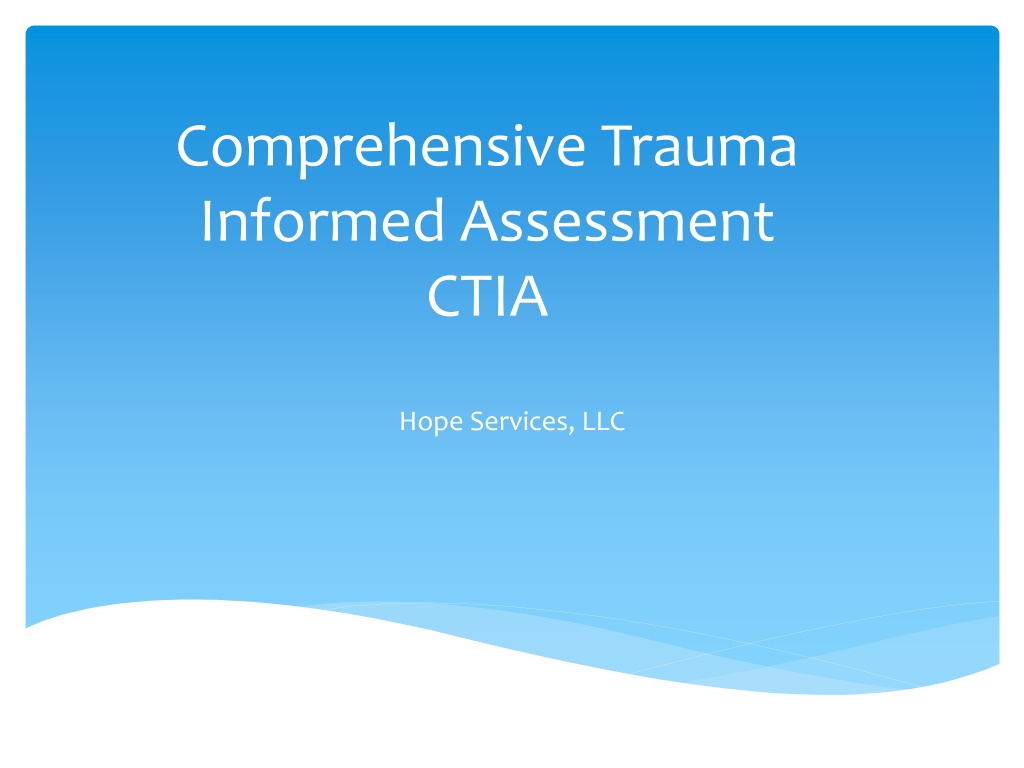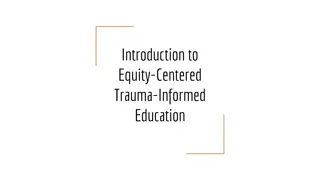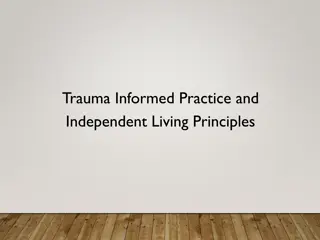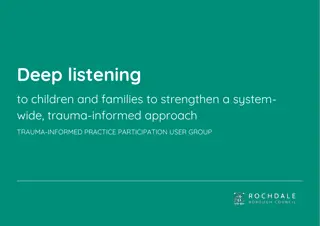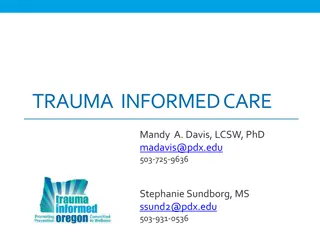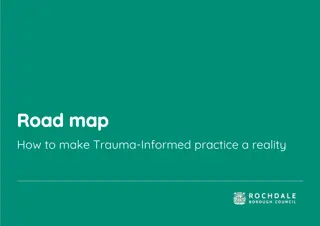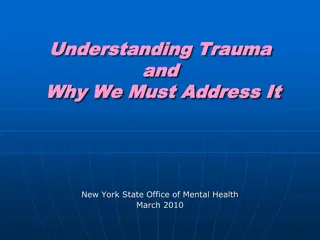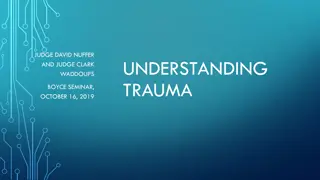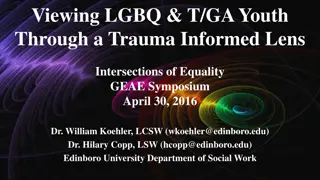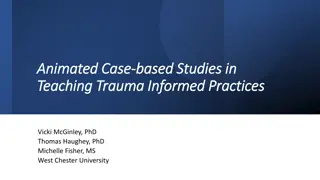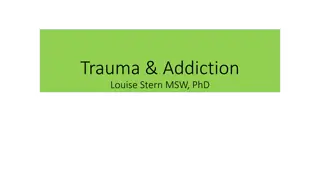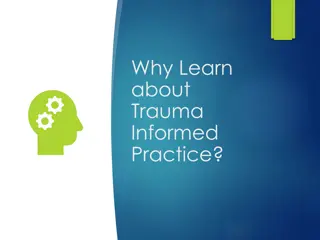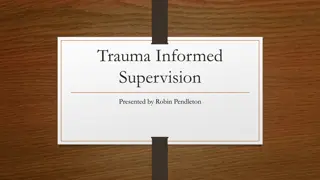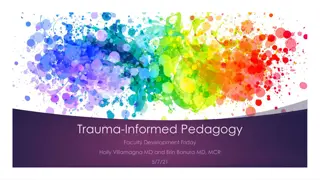Understanding Comprehensive Trauma-Informed Assessment (CTIA) at Hope Services, LLC
Comprehensive Trauma-Informed Assessment (CTIA) at Hope Services, LLC aims to collect information on emotional, behavioral symptoms, trauma history, and mental status to provide appropriate diagnoses, treatment, and recommendations. Through clinician training and involvement of DSS/CPS, clients receive thorough evaluations, preventing placement changes and ensuring effective treatment. Requirements include background review, clinical interviews, assessment measures, collateral contacts, feedback sessions, and written reports utilizing assessment strategies. The process follows a science-informed case conceptualization model with stages focusing on problem identification, diagnosis, conceptualization, treatment planning, and outcome evaluation.
Download Presentation

Please find below an Image/Link to download the presentation.
The content on the website is provided AS IS for your information and personal use only. It may not be sold, licensed, or shared on other websites without obtaining consent from the author. Download presentation by click this link. If you encounter any issues during the download, it is possible that the publisher has removed the file from their server.
E N D
Presentation Transcript
Comprehensive Trauma Informed Assessment CTIA Hope Services, LLC
Purpose of a CTIA To collect information about historical and current emotional and behavioral symptoms, and functioning, including trauma history, and current mental status to identify appropriate diagnoses, and provide treatment and future recommendations for the client. Assessing for trauma in clients could prevent placement changes and disruptions, lengthy treatment episodes or inappropriate treatment recommendations. Ultimately returning clients back to a healthy functioning faster and saving costs!
Clinician Training and Outcomes Hope Services, LLC clinicians have been trained by the Child Treatment Program in conjunction with funding by Alliance Healthcare to complete these assessments.
DSS/CPS involvement in CTIAs Screening caseload to assess who has not had a full trauma evaluation complete with evidenced based trauma measures. Refer to Hope Services, LLC for CTIAs Participate in the assessment process which may include sharing paperwork, completing consents, clinical interview of clients symptoms and background, answering questionnaires Participate in the feedback, interpretive session to leave recommendations and next steps for client
Requirements of a CTIA Review of all relevant background information and documents (including but not limited to, a review of records of previous mental health treatment, school records, previous psychological or educational evaluations, medical records) Clinical interview of the client, caregiver(s) and guardian(s) Clinical assessment measures measuring key symptoms Contact with collateral sources Feedback session(s) Written report
Assessment Strategies Clinical Interviews Standardized Measures Behavioral Observations Record Reviews
Science Informed Case Conceptualization Stage 1:Identify and quantify presenting problems, causal/maintaining factors, and historical factors Stage 2: Assign diagnoses Stage 3: Develop initial case conceptualization Stage 4: Proceed with treatment plan and selection Stage 5: Monitor and evaluate treatment outcomes and revise case conceptualization as needed
Recommendations/Outcomes Mental Health Services Level of Care Evidenced Based Treatment Additional testing/evaluations Community resources Involvement of natural supports
The Interpretive Session Meeting with parent, DSS guardian and/or team Start with strengths learned through the assessment process Clinician will connect information shared in clinical interview to what is reported on measures Clinician will share diagnosis and treatment recommendations to the team Determine next steps as a team
Comprehensive Trauma Assessment Trauma Exposure/Type of Trauma Onset Frequency Duration Chronicity Severity Ages/Developmental Stages Secondary Adversities Potential Trauma Reminder Symptoms of Distress Cultural factors/considerations
NCTSN 12 Core Concepts Traumatic experiences are inherently complex Trauma occurs within a broad context Traumatic events often generate secondary adversities Children can exhibit a wide range of reactions to trauma and loss Danger and safety are core concerns in the lives of traumatized children Traumatic experiences affect the family and broader caregiving systems Protective factors can reduce the adverse impact of trauma Trauma and post trauma adversities can strongly influence development Developmental neurobiology underlies children s reaction to traumatic experiences Culture is closely interwoven with traumatic experiences, response and recovery Challenges to the social contract, including legal and ethical issues, affect trauma response and recovery Working with trauma-exposed children can evoke distress in providers. making it more difficult for them to provide good care.
Resources https://www.nctsn.org/treatments-and- practices/screening-and-assessments/measure-reviews/all- measure-reviews Racine, N., Riddell, R., Khan, M., Calic, M., Taddio, A., & Tablon, P. (2016, March). Systematic Review: Predisposing, Precipitating, Perpetuating, and Present Factors Predicting Anticipatory Distress to Painful Medical Procedures in Children. Retrieved October 16, 2020, from https://www.ncbi.nlm.nih.gov/pmc/articles/PMC4884904/ van Dernoot Lipsky, Laura & Burk, Connie (2009)Trauma Stewardship: An Everyday Guide to Caring for Self while Caring for Others
